
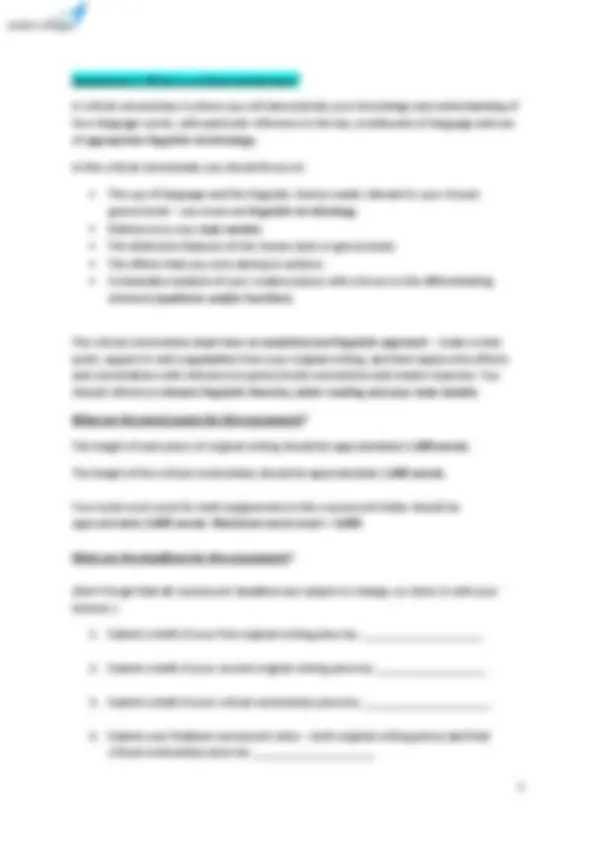
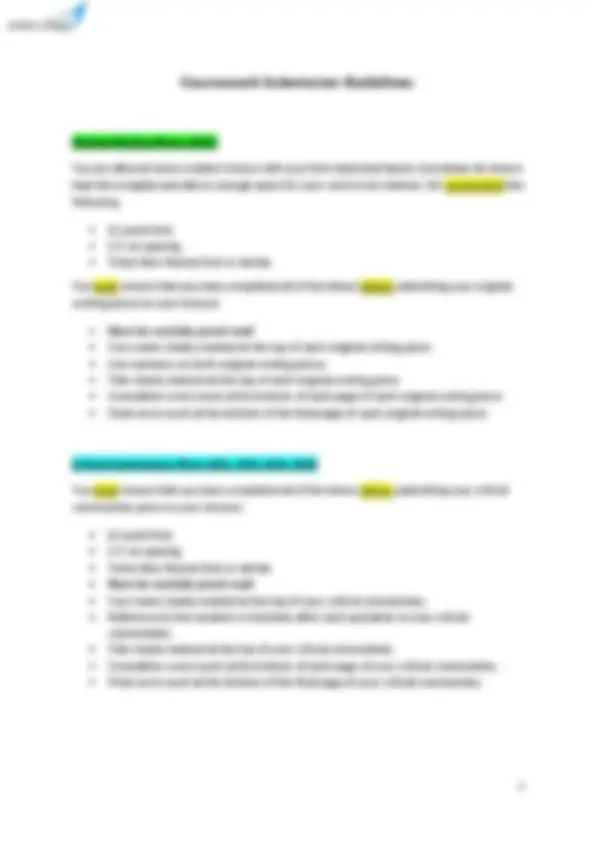
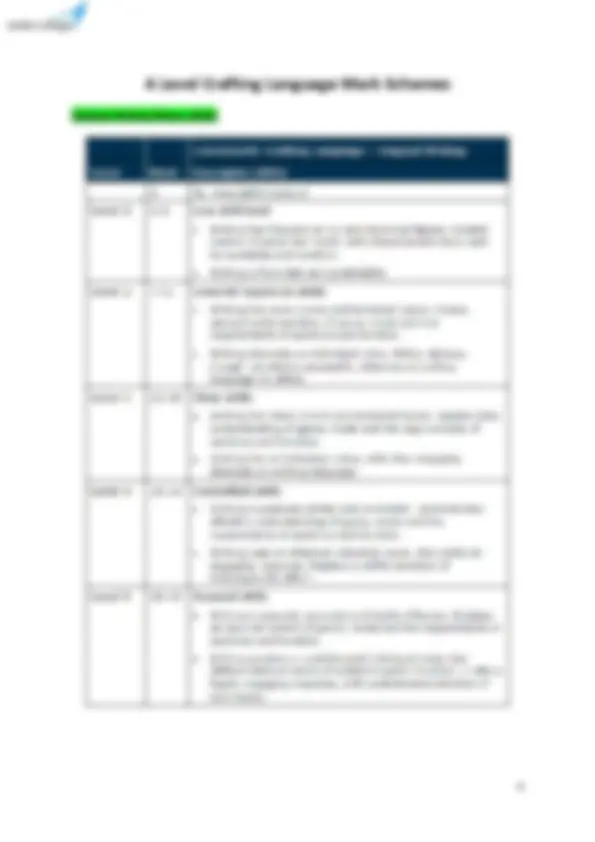
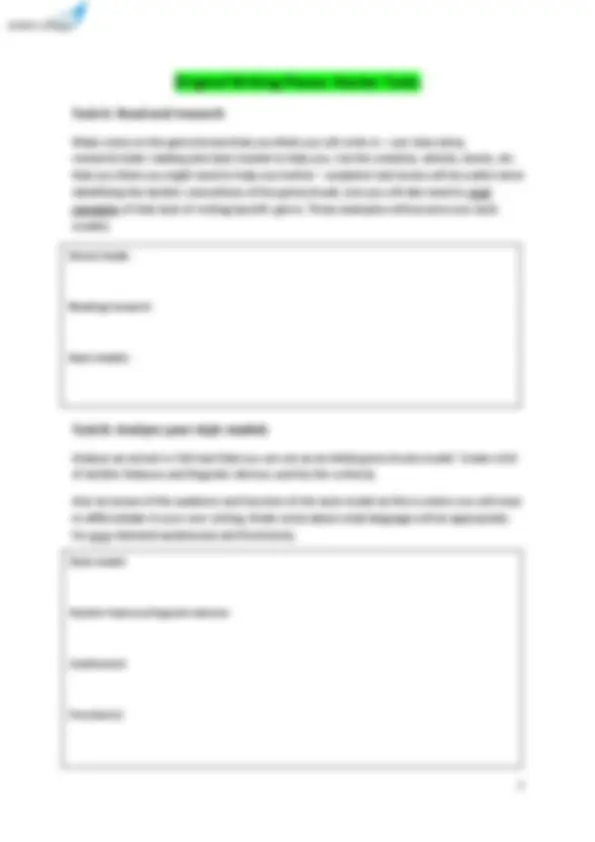
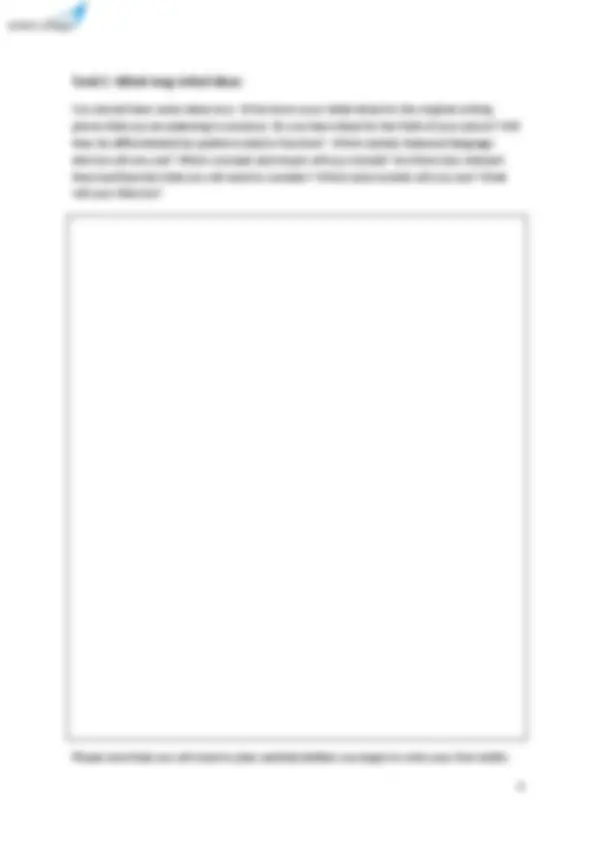
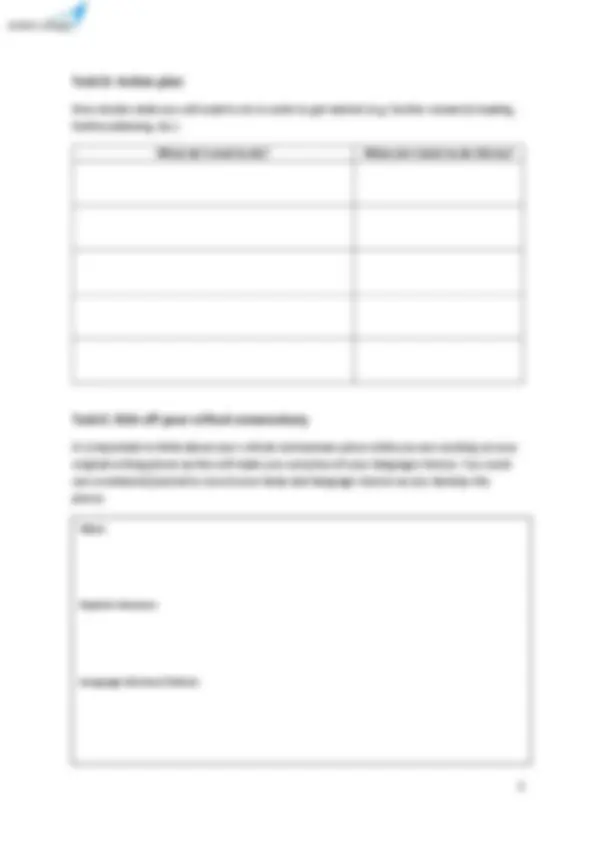
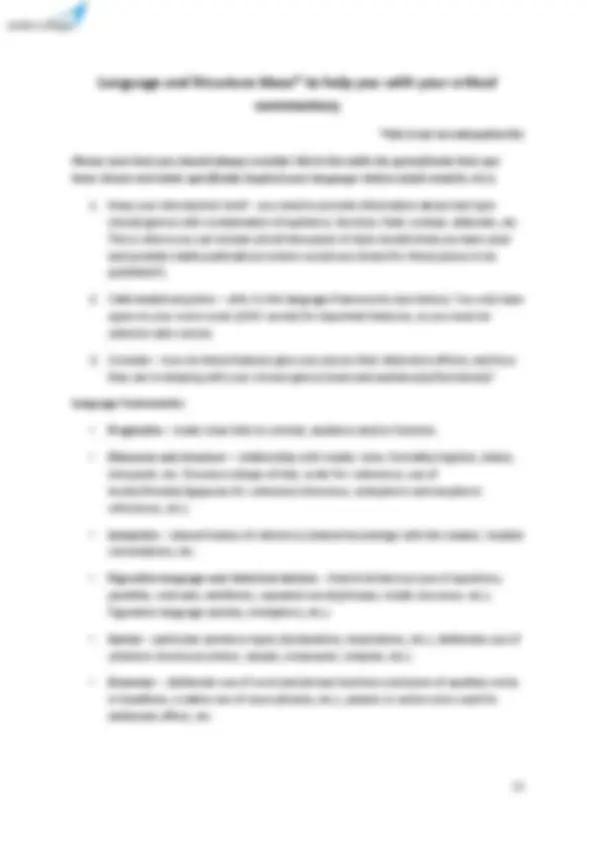
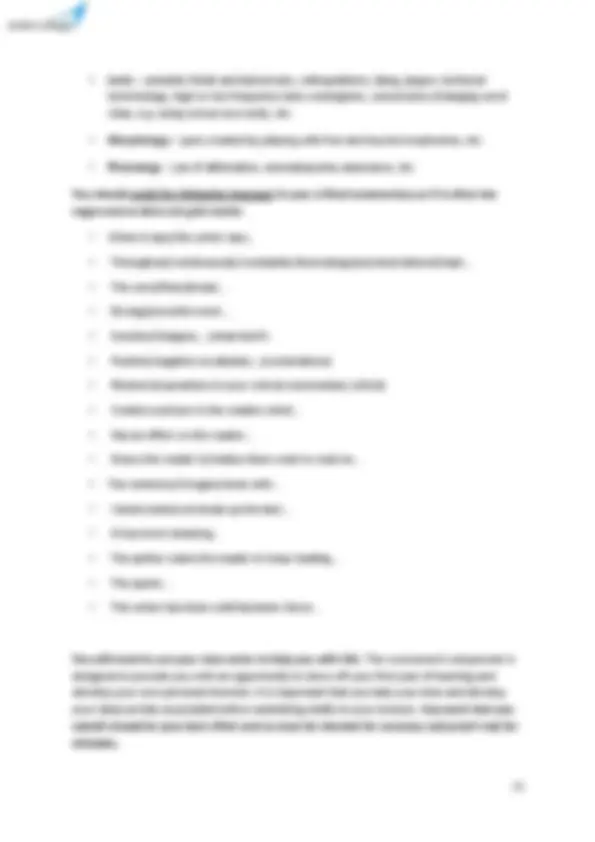
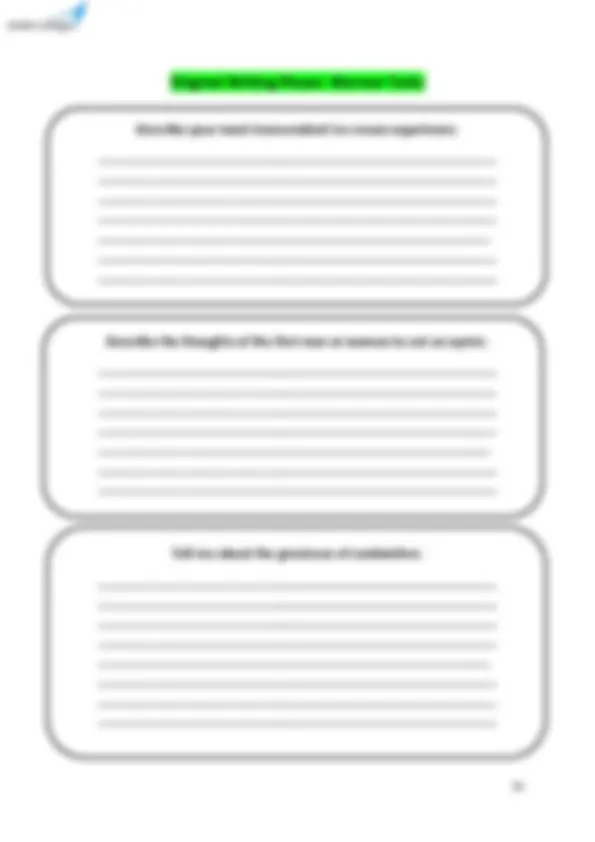
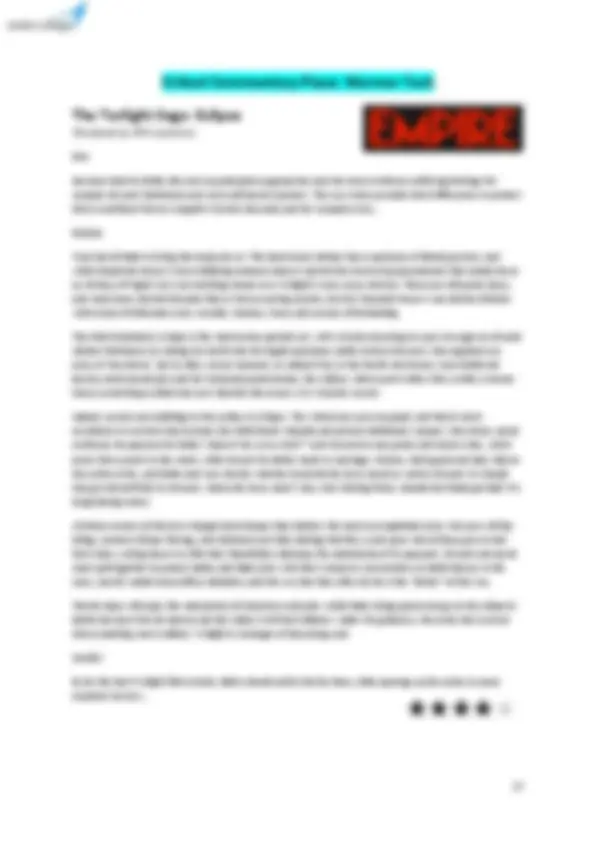
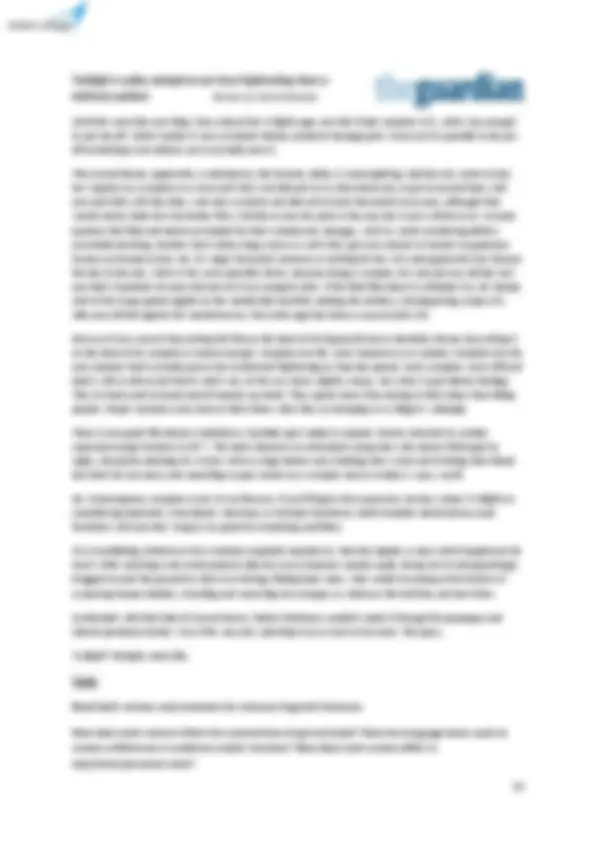


Study with the several resources on Docsity

Earn points by helping other students or get them with a premium plan


Prepare for your exams
Study with the several resources on Docsity

Earn points to download
Earn points by helping other students or get them with a premium plan
Community
Ask the community for help and clear up your study doubts
Discover the best universities in your country according to Docsity users
Free resources
Download our free guides on studying techniques, anxiety management strategies, and thesis advice from Docsity tutors
A Level Coursework Brief: Crafting Language (20%) ... Demonstrate expertise and creativity in the use of English in a range of different contexts,.
Typology: Lecture notes
1 / 19

This page cannot be seen from the preview
Don't miss anything!












Relevant Assessment Objectives: AO1, AO2, AO3, AO4, AO
Demonstrate expertise and creativity in the use of English in a range of different contexts, informed by linguistic study.
Assignment 1 (original writing pieces) : AO5 assessed. 1500-2000 words. 30 marks.
Assignment 2 (critical commentary piece) : AO1, AO2, AO3, AO4 assessed. 1000 words. 20 marks.
(50 marks in total).
Assignment 1: What do I need to do?
For this piece of coursework you need to produce two pieces of creative, original writing in a 'literary' or ‘non-literary’ mode. These must be from the same genre/mode, but differentiated by function and/or audience. They do not have to be on the same field. For instance, you could submit two self-contained online blog entries or two opinion articles for a newspaper.
One of the following examples may be chosen, or you may wish to choose another, provided that you write in a style that is clearly creative/original and based on some study of the chosen genre/mode or style. For example, if the opinion article is chosen, there should be some study of a range of different opinion articles. These will become your style models and must be referenced in your critical commentary (assignment 2). If you wish to choose to write in a form other than those from the list below, you will need to have studied appropriate examples of that form and checked with your lecturer that it is appropriate.
Possible Crafting Language options :
Feature articles (including opinion pieces, reviews, etc.). Journalist interviews (focus on the written form). Scripted presentations. Speeches (again, these should be in the written form). Travel writing. Dramatic monologues (must include details to acknowledge the dramatic function). Short stories from a generic fictional style (e.g. romance, crime, horror, science- fiction, detective, fantasy, etc.).
Please note that you must not submit poetry!
Original Writing Pieces (AO5)
You are allowed some creative licence with your font style/size/layout, but please do ensure that this is legible and allows enough space for your work to be marked. We recommend the following:
12 point font. 1.5 cm spacing. Times New Roman font or similar.
You must ensure that you have completed all of the below before submitting your original writing pieces to your lecturer.
Must be carefully proof read! Your name clearly marked at the top of each original writing piece. Line numbers on both original writing pieces. Title clearly marked at the top of each original writing piece. Cumulative word count at the bottom of each page of each original writing piece. Final word count at the bottom of the final page of each original writing piece.
Critical Commentary Piece (AO1, AO2, AO3, AO4)
You must ensure that you have completed all of the below before submitting your critical commentary piece to your lecturer.
12 point font. 1.5 cm spacing. Times New Roman font or similar. Must be carefully proof read! Your name clearly marked at the top of your critical commentary. Reference to line numbers in brackets after each quotation in your critical commentary. Title clearly marked at the top of your critical commentary. Cumulative word count at the bottom of each page of your critical commentary. Final word count at the bottom of the final page of your critical commentary.
A Level Crafting Language Mark Schemes
Original Writing Pieces (AO5)
Critical Commentary (AO1, AO2, AO3, AO4)
Make notes on the genre/mode that you think you will write in – use class notes, research/wider reading and style models to help you. List the websites, articles, books, etc. that you think you might need to help you further – academic text books will be useful when identifying the stylistic conventions of the genre/mode, but you will also need to read examples of that style of writing/specific genre. These examples will become your style models.
Analyse an extract or full text that you can use as an initial genre/mode model. Create a list of stylistic features and linguistic devices used by the writer(s).
Also be aware of the audience and function of the style model as this is where you will need to differentiate in your own writing. Make notes about what language will be appropriate for your intended audience(s) and function(s).
Genre/mode:
Reading/research:
Style models:
Style model:
Stylistic features/linguistic devices:
Audience(s):
Function(s):
Now decide what you will need to do in order to get started (e.g. further research/reading, further planning, etc.)
What do I need to do? When do I need to do this by?
It is important to think about your critical commentary piece while you are working on your original writing pieces as this will make you conscious of your language choices. You could use a notebook/journal to record your ideas and language choices as you develop the pieces.
Ideas:
Stylistic features:
Language devices/choices:
*this is not an exhaustive list
Please note that you should always consider this in line with the genre/mode that you have chosen and what specifically inspired your language choices (style models, etc.).
Language frameworks:
You should avoid the following language in your critical commentary as it is often too vague and so does not gain marks:
You will need to use your class notes to help you with this. The coursework component is designed to provide you with an opportunity to show off your first year of learning and develop your own personal interests. It is important that you take your time and develop your ideas as fully as possible before submitting drafts to your lecturer. Any work that you submit should be your best effort and so must be checked for accuracy and proof read for mistakes.
16
Twilight's sulky vampires are less frightening than a knitted cushion Review by Charlie Brooker
Until this week the one thing I knew about the Twilight saga was that it had vampires in it, which was enough to put me off. I didn't realise it was a romantic fantasy aimed at teenage girls. Turns out it's possible to be put off something twice before you've actually seen it.
The central theme, apparently, is abstinence; the heroine, Bella, is contemplating whether she wants to lose her virginity to a vampire or a werewolf. She's not allowed to try them both out, or get to second base with one and third with the other. And she's certainly not allowed to take them both on at once, although that would clearly make for a far better film. Whichever one she picks is the one she's stuck with for ever. In some quarters the films and books are lauded for their wholesome message, which is weird considering Bella is essentially deciding whether she'd rather shag a bat or a wolf. She's got zero interest in honest-to-goodness human-on-human action. No. It's magic farmyard creatures or nothing for her. Oh, and apparently she chooses the bat in the end, which is the worst possible choice, because being a vampire, he's not just any old bat, but one that's hundreds of years old and isn't even properly alive. If the final film doesn't culminate in a 28-minute shot of her lying spread-eagled on the marital bed tearfully rubbing the leathery, disintegrating corpse of a 200-year-old bat against her marital sector, the entire saga has been a cop-out and a lie.
But even if you weren't boycotting the film on the basis of its disgraceful necro-bestiality theme, boycotting it on the basis of its vampires is reason enough. Vampires are the worst monsters ever created; Vampires are the only monster that's actually grown less brutal and frightening as time has passed. Early vampires were stiff and aloof, with a cold sexual intent which was, at the very least, slightly creepy. Now they've got bloody feelings. They're lonely and tortured and all messed up inside. They spend more time staring at their shoes than killing people. Proper monsters only stare at their shoes when they're stamping on a villager's windpipe.
There is one good film about a meditative, troubled post-modern vampire: Martin, directed by zombie supremo George Romero in 1977. The main character is a disturbed young man who roams Pittsburgh by night, chemically sedating his victims with a syringe before razor-blading their wrists and drinking their blood. But that's far too nasty and unsettling to pass muster as a vampire movie in today's wussy world.
No. Contemporary vampires come in two flavours, if you'll forgive the expression. Sexless wimps (Twilight) or smouldering hedonists (True Blood). Morrissey or Michael Hutchence. Both troubled. Both dreamy-eyed frontmen with nice hair. Forgive my pants for remaining unshitten.
It's a humiliating climb-down for a monster originally inspired by Vlad the Impaler, a man who'd happily eat his lunch while watching a skewered peasant slide down an immense wooden spike, being slowly and agonisingly dragged toward the ground by their own kicking, flailing body mass. Vlad would sit among entire forests of screaming human kebabs, chuckling and munching his oxburger or whatever the hell they ate back then.
Confronted with that kind of visceral horror, Robert Pattinson wouldn't make it through his asparagus and shaved parmesan starter. Even if he was only watching it on a 4-inch LCD screen. The pussy.
Twilight? Pisslight, more like.
Task:
Read both reviews and annotate for relevant linguistic features.
How does each review reflect the conventions of genre/mode? How has language been used to create a difference in audience and/or function? How does each review differ in style/tone/personal voice?